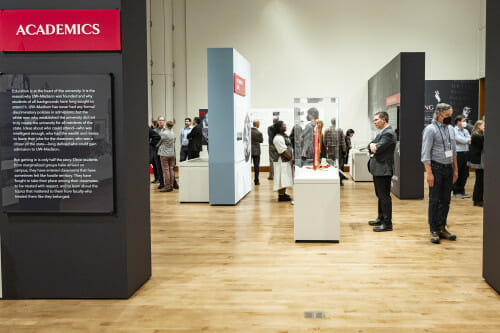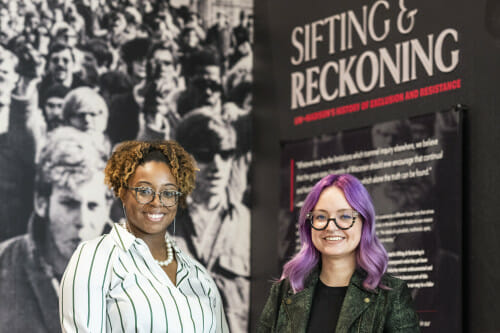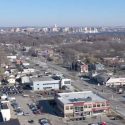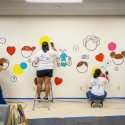New center will build on work of university’s Public History Project
The University of Wisconsin–Madison will establish a permanent center with a full-time staff to continue and expand on the work of its well-received Public History Project, Chancellor Jennifer Mnookin announced today.
The new entity, to be called the Rebecca M. Blank Center for Campus History, will be housed within the Division for Teaching and Learning. Its staff will be devoted to educating the campus community about the university’s past in ways that will enrich the curriculum, inform administrative decisions and bolster efforts to achieve a more equitable university.
“Naming the center after Chancellor Emerita Blank is a wonderful way to acknowledge and honor her central role in creating the Public History Project,” Mnookin says. “Chancellor Emerita Blank recognized that our campus, to move forward, needed to learn from and reckon with difficult aspects of its history. Her vision and leadership began this process, and with today’s announcement, we will continue that important work.”
The university anticipates having the new center up and running by mid-summer, which is when the Public History Project, designed as a limited initiative, will end.
“The Public History Project has had a tremendous impact on campus and in the broader community, due in large part to the extraordinary work and leadership of Director Kacie Lucchini Butcher and team,” Mnookin says. “Our faculty, staff and students are eager to take this history and use it to make our campus a better place for everyone. With the new center, we are committing to embedding the mission of the Public History Project in the daily life of campus and in our decision-making.”

Attendees walk through the exhibition “Sifting and Reckoning: UW–Madison’s History of Exclusion and Resistance” at the Chazen Museum of Art. The exhibition was one outcome of UW–Madison’s Public History Project, a multiple-year effort to better understand the university’s history of bigotry and exclusion, including inequities based on race, gender, religious beliefs and more. The newly announced Rebecca M. Blank Center for Campus History will build on the work of the project. Photo: Bryce Richter
Chancellor Emerita Blank commissioned the Public History Project in 2019 as one of several responses to a campus study group that investigated the history of two UW–Madison student organizations in the early 1920s that bore the name of the Ku Klux Klan. The project was charged with uncovering and giving voice to those who experienced and challenged bigotry and exclusion at UW–Madison and improved the university through their courage and actions.
Throughout the Public History Project, staff members and researchers, including many students, have published blog posts based on their findings. The project’s museum exhibition, called “Sifting and Reckoning: UW–Madison’s History of Exclusion and Resistance,” ran from Sept. 12 to Dec. 23, 2022, at the Chazen Museum of Art. It was viewed by 160 tour groups and logged 23,121 visits, making it one of the most popular exhibitions in the museum’s main gallery in recent years. The exhibition’s companion website has been viewed more than 12,000 times by people in 47 states and 44 countries.
“Students and alumni alike told us that visiting the exhibition made them feel more connected to UW,” says LaVar Charleston, deputy vice chancellor and chief diversity officer. “They saw themselves and their communities being reflected in the history of the university — in some cases for the first time.”
Ndemazea Fonkem, chair of the Associated Students of Madison, welcomed the announcement of the new center.
“After working in conjunction with the Public History Project to pass legislation in support of the project’s continuation, we are thrilled that the university has taken the step not to shy away from its history but to confront it,” Fonkem says. “Work over the past year from members of our body like Kylie Hollenstein and Amaya Boman has demonstrated the importance that this project has to students — it’s a concrete sign that you are seen, and that you are not alone.”
Many details related to the new center are still being discussed and will be shared with the campus community as planning continues, including the possibility of space on campus for physical exhibits related to the center’s work, says John Zumbrunnen, vice provost for teaching and learning.
Zumbrunnen, a professor of political science, says many instructors across campus, himself included, have incorporated the findings of the Public History Project into their courses. He expects this practice to grow, with the staff of the new center continuing to assist instructors in developing curriculum.
“When I teach about democracy and the history of protest movements, it has always been incredibly powerful to connect students with events that happened on this very campus,” Zumbrunnen says. “The new center will help ensure that our students have a local lens to learn about the broader world.”
Since its inception, the Public History Project has been led by Lucchini Butcher, a public historian and award-winning museum curator. Taylor L. Bailey began working for the project as a graduate student and became its assistant director last summer. Together, the two have been a prominent presence on campus, leading tour groups, appearing at panel discussions, and discussing the university’s history in classrooms and at campus events.

Public History Project Director Kacie Lucchini Butcher (right) and Assistant Director Taylor L. Bailey (left) have been a prominent presence on campus, leading tour groups, appearing at panel discussions, and discussing the university’s history in classrooms and at campus events. Photo: Jeff Miller
“It’s incredibly important to recognize the skill and expertise of Kacie and Taylor and the team they’ve put together,” Zumbrunnen says. “They are a big part of why this campus has felt such passion toward the project.”
Bailey says she was a little surprised by the public’s embrace of the project given that the history is often difficult to confront.
“The fact that people are talking about it and finding it useful and helpful, that makes me feel proud,” she says.
Lucchini Butcher plans to hold campus listening sessions this spring as the new center comes into focus.
“Taylor and I are excited that this work will continue,” Lucchini Butcher says. “The first iteration of the Public History Project was necessarily limited in its scope. We were very focused on delivering the final product — the museum exhibition. Now campus has the potential to do so much more, and we’re eager to hear from the campus community about how the new center can best serve the university.”



